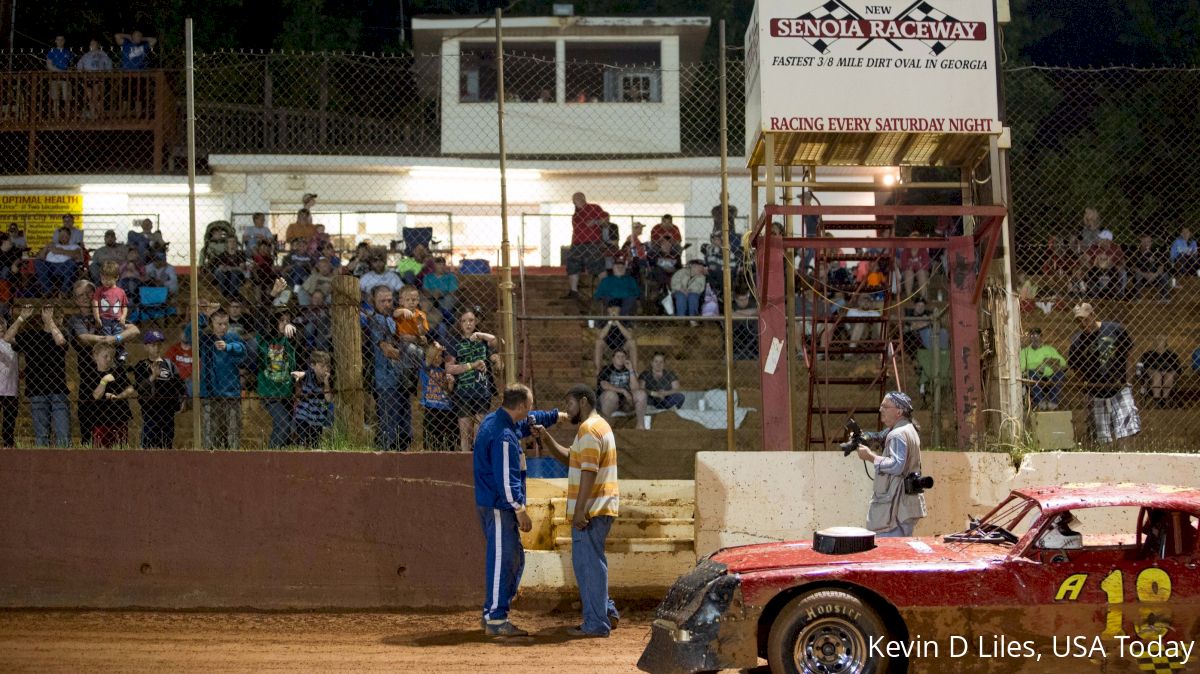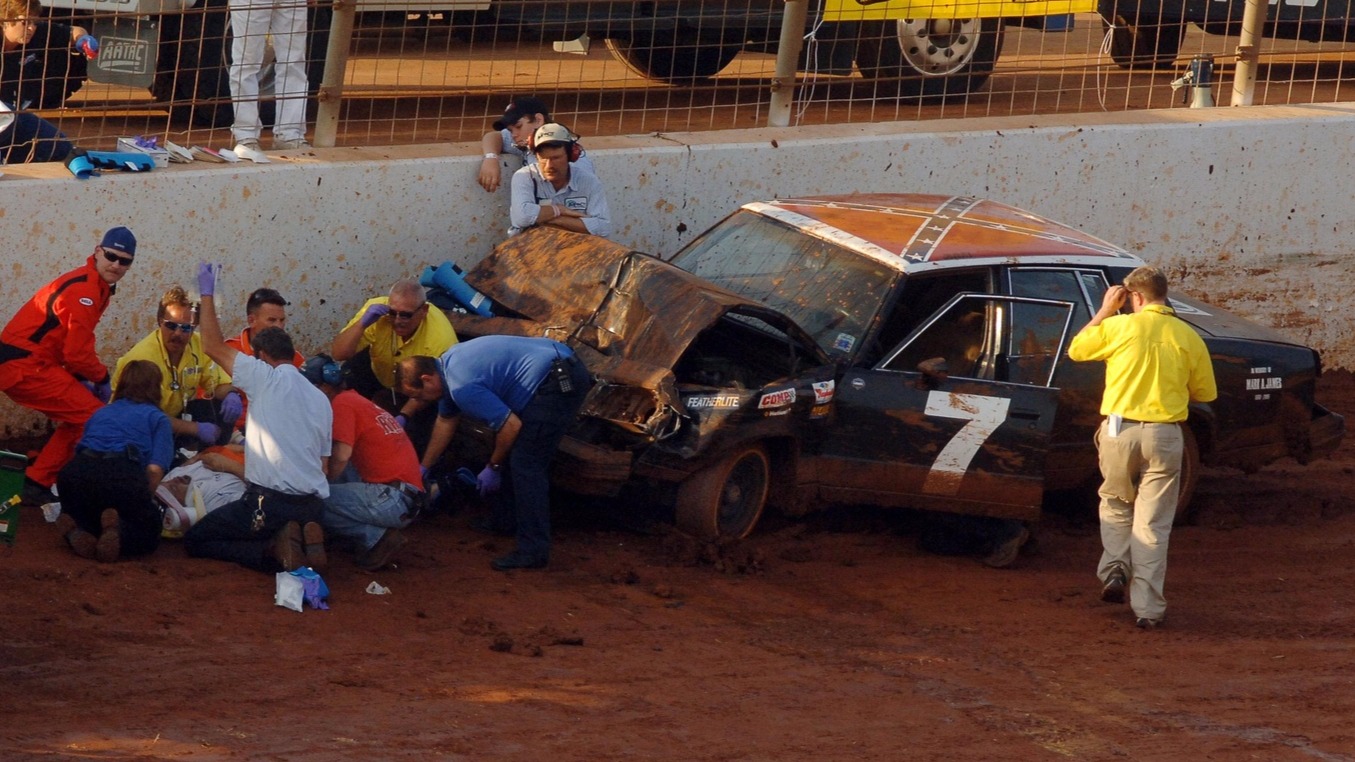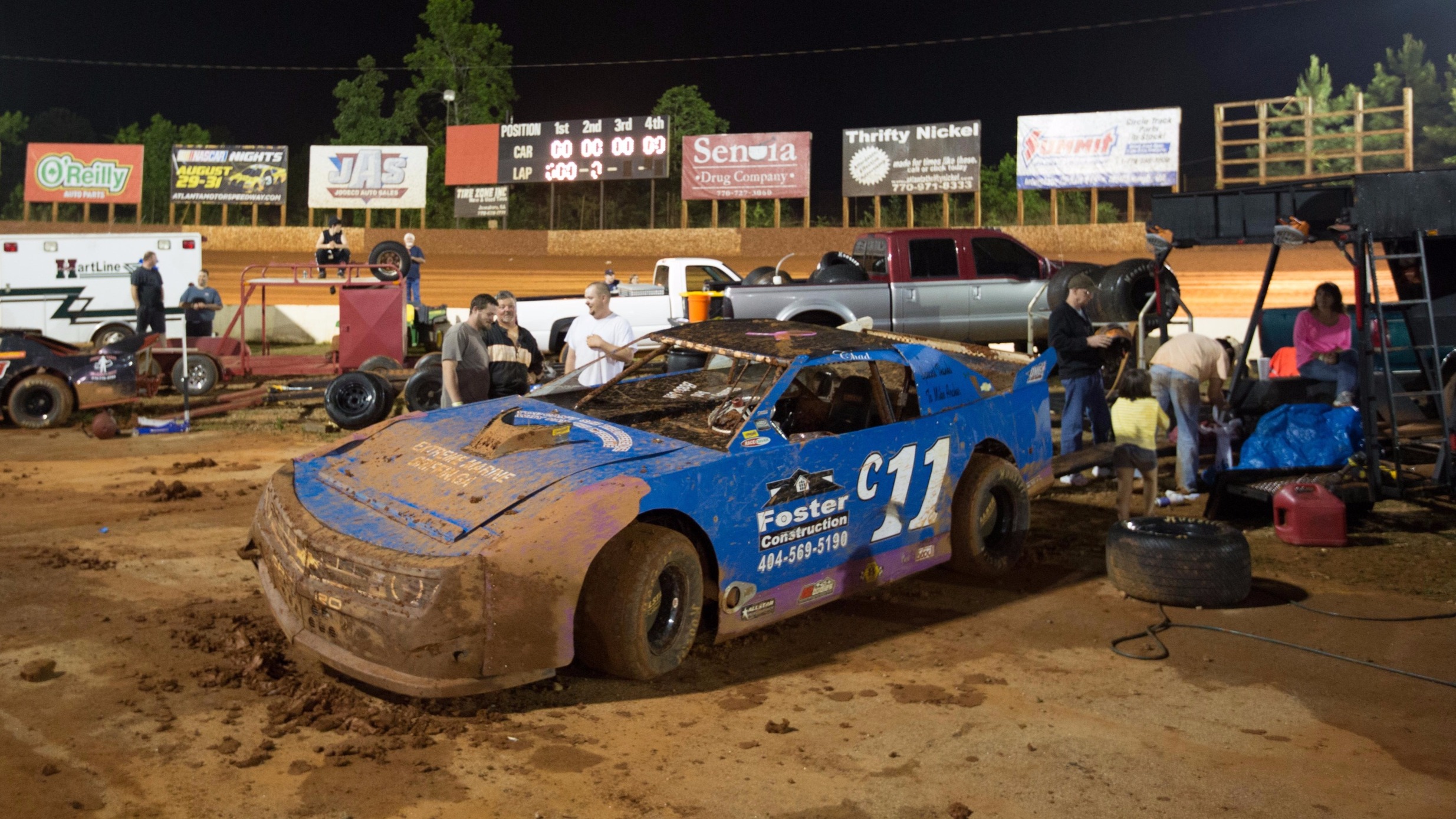Tightening Up The Saturday Night Show At Short Tracks
Tightening Up The Saturday Night Show At Short Tracks
To attract more fans, short tracks have to run a tighter show that fits into a reasonable timeframe.

By Jonathon Masters
You left home at 4 PM. Gates opened at 5 and racing was scheduled to start at 7. There were three classes running that night so you figured the complete show would be done by 11 at the latest and you'd be out of the track in time to stop and get something to eat on your drive home. You paid $15 admission, grabbed a $2 drink, and bought a $2 bag of popcorn. It was going to be a fantastic Saturday evening.
But in reality, you didn't pull into your driveway until 2:00 AM. Your night at the races didn't quite go as planned. No time to worry about that now though, because in a few hours you'll need to be up for your family's Sunday morning routine.
So much for catching up on sleep this weekend after a long week at work. Maybe next week you'll go see a movie instead.
There was once a time when race promoters feared the loss of fans to the movie theater, since it was the cheaper option. But in 2017, that's no longer the case. Tickets for two people will approach $20, and that's not even considering snacks and drinks. The bottom line is that tracks are no longer losing fans to other forms of entertainment due to cost.
The biggest advantage the movie theater, stick and ball sports, and most other forms of entertainment have over racing is predictability. If you go to see a 7 PM movie, you will be home by 10. If you go to any stick and ball sport, the minute the time clock hits zero, it's over and you can plan by it.
Barring extreme circumstances, racing isn't over until the checkered flag waves over the A-main. That could take four hours or 14. It's a problem that drives both young and old fans away from the track, often for good.
Of course, there are certain circumstances beyond a promoter's control. Weather delays and safety concerns are a couple things that most fans will accept. Fans understand that sometimes things happen that are going to add some obstacles to the events of the night.

The problem is that these items rarely are the culprit behind long nights at the races.
There is a long list of common show-prolonging decisions made by track officials. Some have relatively simple solutions, and some are more complicated. The reason for this is to keep fans coming back week after week to the race track.
One of the major problems plaguing tracks and dragging out show is a plethora of unnecessary cautions. Most people realize that weekly short track racing is a sport of 9-5 workers who race on the weekend at a hobby level. They aren't pros, and mistakes are going to happen. That is why rules such as a two-caution rule must be made standard. If you cause two yellows in an eight-lap race you need to pull in and try again next time. That goes double for racers who choose to stop on the track for unnecessary amounts of time. Pull out that black flag and keep the show moving.
The next item under the track's control that should be addressed is races that take entirely too long to complete in comparison to the number of laps. Bottom line, it should not take 20 minutes to run a 12-lap B-main. I'm not going to claim to know the proper amount of time for every individual situation, but one must exist. No race under 20 laps should take over 15 minutes.
It's hard to pull off a good race with a bad surface. Sometimes track work is necessary during the night, but as tempting as it may be to rework the track completely, sometimes it's best to leave the track alone. Most of the time a rework will not save poor track conditions completely and sometimes it makes it worse. People may complain a little about track conditions but not nearly as much as if they see poor track conditions as well as a 2 AM finish.

The next item may be a little more difficult to tackle.
Sometimes tracks run long because they have committed themselves to running too many classes in a night. Every track is different and some are able to do up to four in a night with no problem. They adapt their program to make it work. Depending on your region some tracks may not time trials and some may qualify only by heat race. There is a tapestry of schedules that may work. A lot of tracks choose to alternate divisions from week to week. This enables them to run more classes. The difficulty comes when tracks have to decide if it's better to lose some back gate every weekend in hopes of improving the fan attendance.
That is a quick list of items that can drag a show out. Every track is different and what works for some to speed up the show may not for others. In the end it all comes down to continuing to give the fans a great event while competing with other forms of entertainment. We are all in this together, but some of us have kids that wake up early, so let's keep the show moving.
Jonathon Masters has a lifelong connection with dirt racing. His family has owned and operated MasterSbilt Race Cars manufacturing dirt late model chassis for 35 years. He attended college in North Carolina for motor sports management and has written for various industry publications. Jonathon was an account executive at The International Motorsports Industry Show, founder of the Heartland Auto Racing Show, and has been a racing industry professional for over a decade.
Fixing The Late Model Hall Of Fame
Track Promoters Spend Big On Big Shows
The Summer Nationals Require a Hellish Cost
Shock Wars
Drivers Must Get It Right (And Left) At Sonoma
Dale Jr. Snaps Winless Streaks At Michigan
Welcome to the Bigs Bubba
Dover International Speedway Has Some Monster Storylines
You left home at 4 PM. Gates opened at 5 and racing was scheduled to start at 7. There were three classes running that night so you figured the complete show would be done by 11 at the latest and you'd be out of the track in time to stop and get something to eat on your drive home. You paid $15 admission, grabbed a $2 drink, and bought a $2 bag of popcorn. It was going to be a fantastic Saturday evening.
But in reality, you didn't pull into your driveway until 2:00 AM. Your night at the races didn't quite go as planned. No time to worry about that now though, because in a few hours you'll need to be up for your family's Sunday morning routine.
So much for catching up on sleep this weekend after a long week at work. Maybe next week you'll go see a movie instead.
There was once a time when race promoters feared the loss of fans to the movie theater, since it was the cheaper option. But in 2017, that's no longer the case. Tickets for two people will approach $20, and that's not even considering snacks and drinks. The bottom line is that tracks are no longer losing fans to other forms of entertainment due to cost.
The biggest advantage the movie theater, stick and ball sports, and most other forms of entertainment have over racing is predictability. If you go to see a 7 PM movie, you will be home by 10. If you go to any stick and ball sport, the minute the time clock hits zero, it's over and you can plan by it.
Barring extreme circumstances, racing isn't over until the checkered flag waves over the A-main. That could take four hours or 14. It's a problem that drives both young and old fans away from the track, often for good.
Of course, there are certain circumstances beyond a promoter's control. Weather delays and safety concerns are a couple things that most fans will accept. Fans understand that sometimes things happen that are going to add some obstacles to the events of the night.

The problem is that these items rarely are the culprit behind long nights at the races.
There is a long list of common show-prolonging decisions made by track officials. Some have relatively simple solutions, and some are more complicated. The reason for this is to keep fans coming back week after week to the race track.
One of the major problems plaguing tracks and dragging out show is a plethora of unnecessary cautions. Most people realize that weekly short track racing is a sport of 9-5 workers who race on the weekend at a hobby level. They aren't pros, and mistakes are going to happen. That is why rules such as a two-caution rule must be made standard. If you cause two yellows in an eight-lap race you need to pull in and try again next time. That goes double for racers who choose to stop on the track for unnecessary amounts of time. Pull out that black flag and keep the show moving.
The next item under the track's control that should be addressed is races that take entirely too long to complete in comparison to the number of laps. Bottom line, it should not take 20 minutes to run a 12-lap B-main. I'm not going to claim to know the proper amount of time for every individual situation, but one must exist. No race under 20 laps should take over 15 minutes.
It's hard to pull off a good race with a bad surface. Sometimes track work is necessary during the night, but as tempting as it may be to rework the track completely, sometimes it's best to leave the track alone. Most of the time a rework will not save poor track conditions completely and sometimes it makes it worse. People may complain a little about track conditions but not nearly as much as if they see poor track conditions as well as a 2 AM finish.

The next item may be a little more difficult to tackle.
Sometimes tracks run long because they have committed themselves to running too many classes in a night. Every track is different and some are able to do up to four in a night with no problem. They adapt their program to make it work. Depending on your region some tracks may not time trials and some may qualify only by heat race. There is a tapestry of schedules that may work. A lot of tracks choose to alternate divisions from week to week. This enables them to run more classes. The difficulty comes when tracks have to decide if it's better to lose some back gate every weekend in hopes of improving the fan attendance.
That is a quick list of items that can drag a show out. Every track is different and what works for some to speed up the show may not for others. In the end it all comes down to continuing to give the fans a great event while competing with other forms of entertainment. We are all in this together, but some of us have kids that wake up early, so let's keep the show moving.
Jonathon Masters has a lifelong connection with dirt racing. His family has owned and operated MasterSbilt Race Cars manufacturing dirt late model chassis for 35 years. He attended college in North Carolina for motor sports management and has written for various industry publications. Jonathon was an account executive at The International Motorsports Industry Show, founder of the Heartland Auto Racing Show, and has been a racing industry professional for over a decade.
Exclusive Content
Weekly Columns by Jonathon Masters
Efficient Operation Of Regional Series Is KeyFixing The Late Model Hall Of Fame
Track Promoters Spend Big On Big Shows
The Summer Nationals Require a Hellish Cost
Shock Wars
Weekly Columns by JD Hellman
Big Changes Are Coming For NASCARDrivers Must Get It Right (And Left) At Sonoma
Dale Jr. Snaps Winless Streaks At Michigan
Welcome to the Bigs Bubba
Dover International Speedway Has Some Monster Storylines